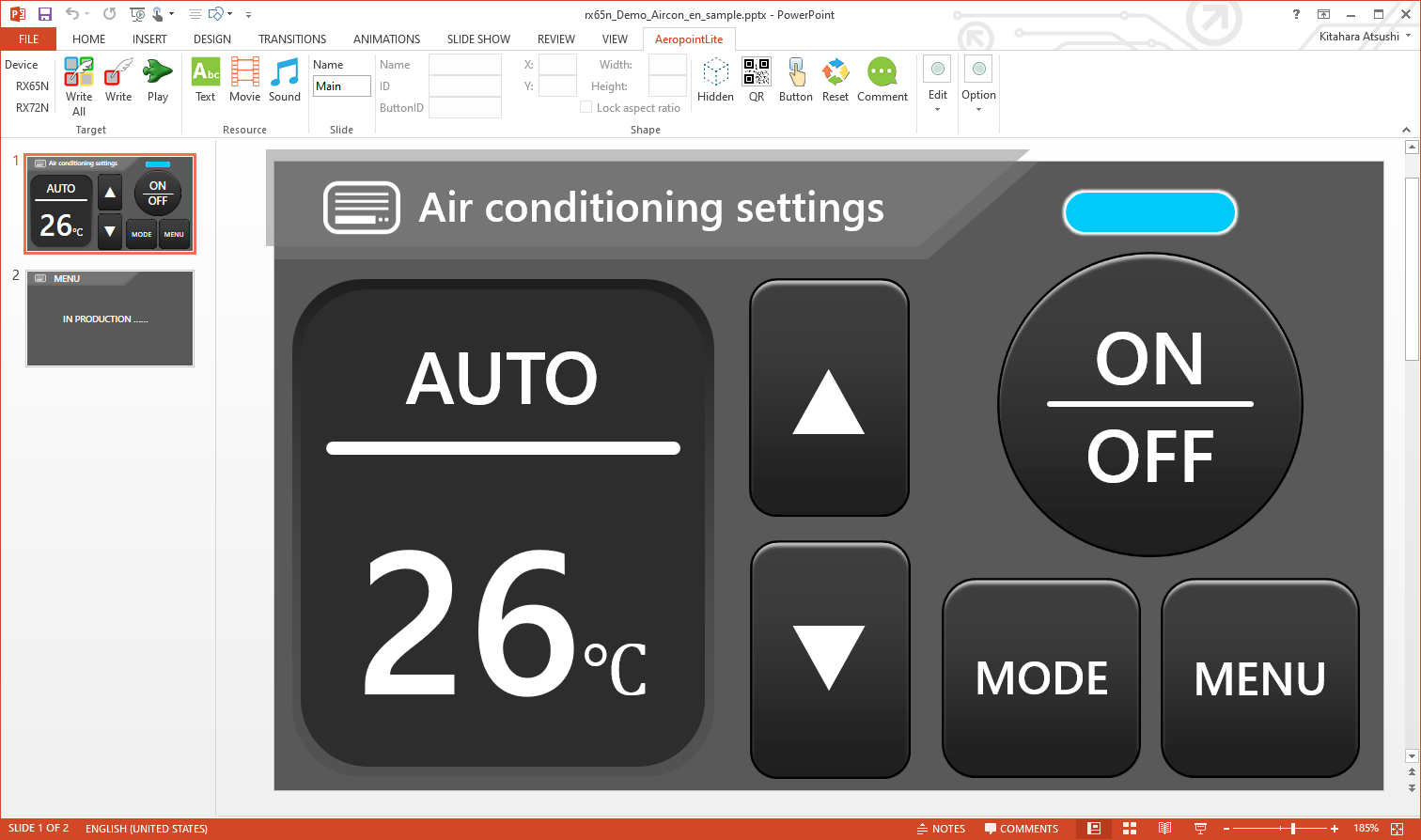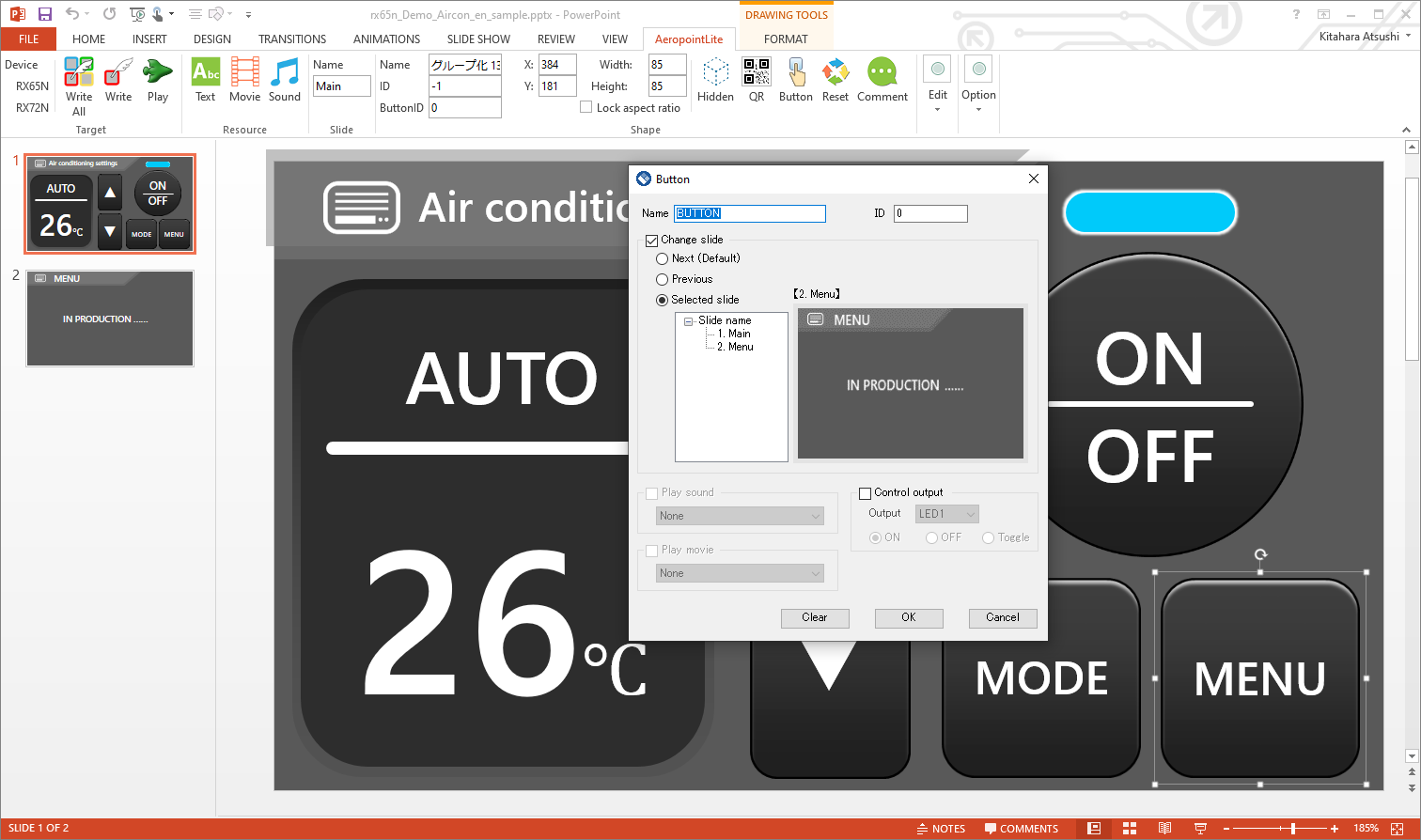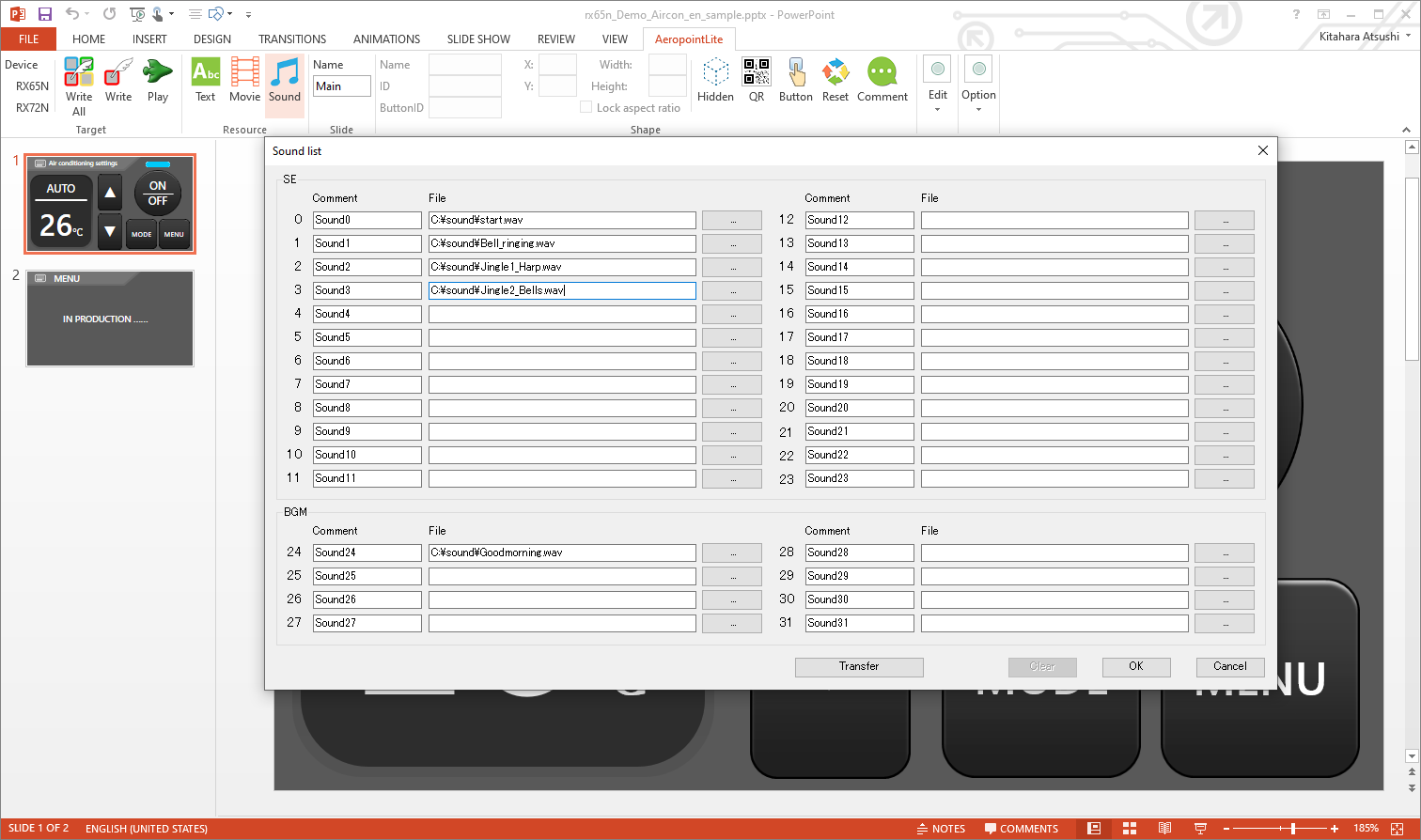Nowadays, smartphones play an indispensable role in our lives. Thus, the graphical UI (GUI) is becoming increasingly significant among smartphone users.
Besides, more and more embedded device manufacturers are providing a variety of lineups from a hard key and a segment LCD to a color LCD. Many customers who try a color LCD for the first time find it difficult to develop a GUI for the color LCD; I had not realized this problem before, but can you imagine how you can develop and display a GUI with the C programming language? You can rest assured because a super-easy-to-use tool is available for Renesas' RX Family 32-bit MCUs. It enables you to easily develop a GUI, even if you cannot write the C programming language you can still use Microsoft® PowerPoint® (hereafter called “PPT”). There is the Aeropoint® GUI for RX, a tool provided by CRI Middleware Co., Ltd. (hereafter called “CRI”).
I have prepared a kit for this demonstration for your viewing.

The kit is based on the Envision kit with the RX65N 32-bit MCU and includes Ethernet and an extended board for audio.
Now, let’s start PPT by connecting it to a PC.
I will create a simple picture as a test.

I have made an example of an air conditioning controller.
Add a button with an arrow for UP/DOWN to change the temperature settings, an operation/stop button and a menu button. Then, click the Run button in Add-on in PPT…

…..complete!!
Since a GUI which was once displayed is written into storage on the board, when separating the PC from the kit, it operates on its own This display was created so smoothly and quickly, don’t you feel that developing a GUI is so simple now?
To complete the GUI development, now you just have to set up screen transitions when a button on the touch panel is tapped and a command is sent from an external interface.
For example, when you touch the button for turning up temperature settings on the touch panel, a command for changing the temperature is sent to a control module (PC in this case) and the module will send the changed temperature setting to the board, and then it is reflected on the numerical value on the screen in real time.
These operations can be built in by specifying objects in PPT.

By clicking the Run button again, the kit is updated, so debugging is easy too.
Furthermore, this tool has another highly recommended function. Believe it or not, this tool can produce both video and sound. Since you go out of your way to install an LCD, you probably want to utilize both of them to display advertisements.
When you import a sound you want to produce on PPT, the sound can be outputted with the D-Amp Driver by CRI. An appealing point is to be able to produce a sound just by connecting a simple speaker for just a few dollars without mounting an expensive audio producing circuit.

Audio data is imported in a compressed form for embedded devices, which is also an advantage.
Likewise, by registering a video on the PPT and transferring it to a linked page, it is replayed in full screen. Of course, with sound.
Even though the number of colors is apparently reduced to 256 colors by MCUs for embedded devices at that, the kit can re-play such a beautiful video. I have never seen a tool like this. What makes this possible is, a wide variety of techniques which CRI has cultivated in the field of entertainment incorporated into the kit.
I tried playing back a video with audio in full screen.
INVALID VIDEO
If you can install a GUI, sound and video in such a simple way, you don’t find developing them difficult, do you?
If you can use PPT, you can install a color LCD immediately!
For additional details, refer to the following links.
Aeropoint GUI for RX and D-Amp Driver
RX65N and Envision kit.
*Microsoft and PPT are registered trademarks of Microsoft Corporation in the United States and/or other countries. Aeropoint by CRI Middleware Co., Ltd. is either a registered trademark or trademark of CRI Middleware Co., Ltd. in Japan and/or other countries. All the product and service names in this blog are either trademarks or registered trademarks belonging to their respective owners.
